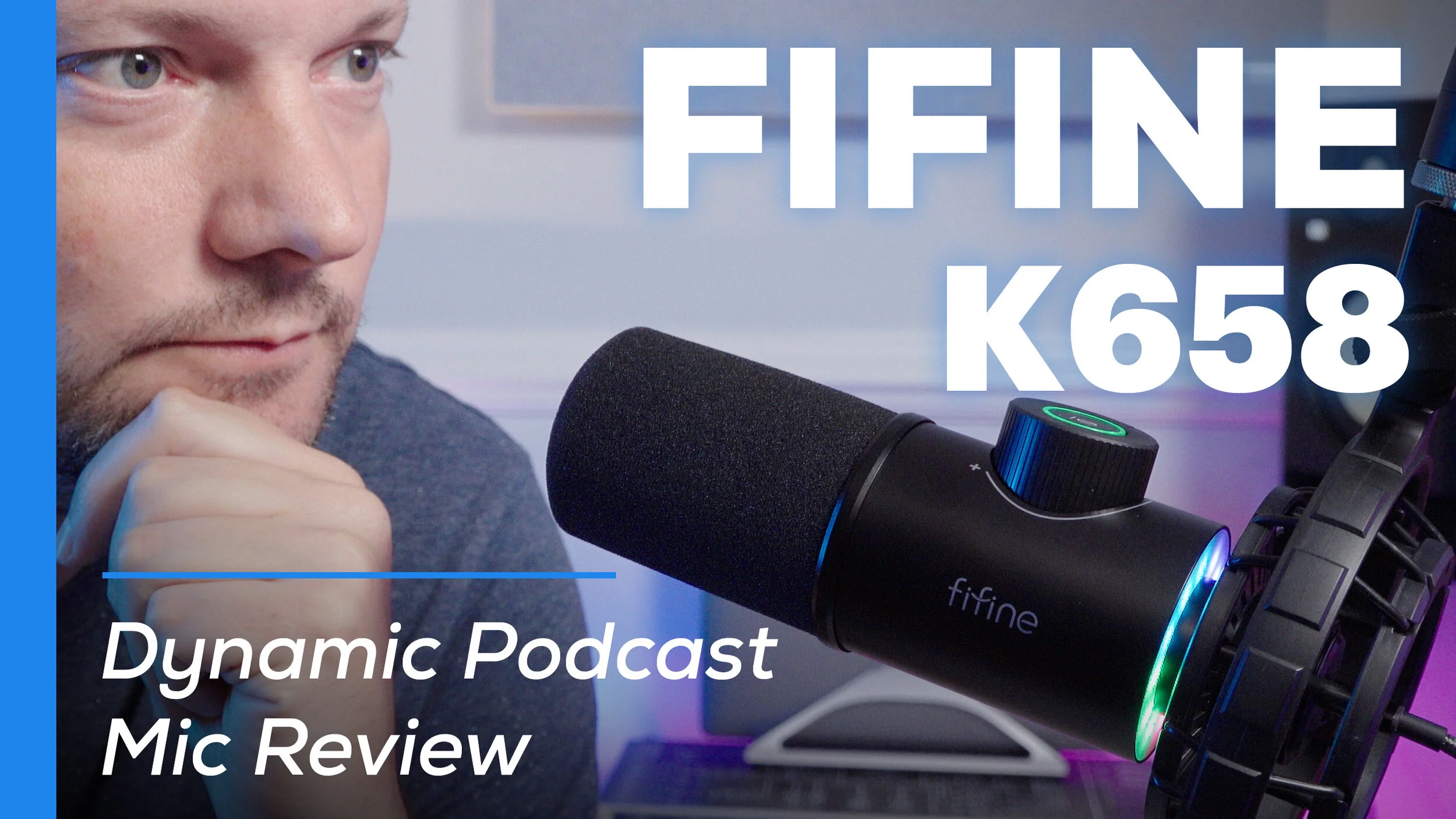Fifine K658 - Definitely Worth A Listen
What’s In The Video?
A review and audio test of the Fifine K658 budget end-address dynamic USB podcast / broadcast mic.
This entire video is recorded using the K658 so you can get the best idea of how this sounds. This is exactly how it's meant to be used so it should be a good demonstration.
Support the Channel
If you’d like to support the channel, please use the link below to check out the Fifine K658 on Amazon. Thank you!
Don’t forget that you can also support me on Patreon.
K658 Specifications
Mic Principle: Dynamic
Polar Pattern: Cardioid
Frequency Response: 70Hz-15kHz
Sensitivity: -50dB (at 1kHz)
SNR: >70dB
Max SPL: 110dB
Shipping Weight: 1kg
Fifine K658 RGB Lights and Gain Control
K658 Review
Let’s take a look at the pros and cons of the mic. It’s better for me if you watch the video but if you don’t have time to watch or you just prefer to read reviews, I hope this will give you an idea of whether this is the right product for you.
Pros
Audio quality. Surely that's what counts above anything else for a microphone. It might look nice and have pretty coloured lights but if it sounds like garbage, what's the point. The Fifine K658 does not sound like garbage. It has a full-bodied 'radio' sound which is very listenable.
Gain Control. The huge gain control on the body of the mic works great. As a design feature, it kind of defines the microphone and makes it stand out from the pack. It could easily look stupid but it doesn't and the fact that it's a big size makes it much easier to adjust. For the record, I found a gain around the 10-11 o'clock position to be good for use on a MacBook.
Touch Sensitive Mute Button with visual feedback (red and green). As a USB mic, you're not likely to be using this with a mixer so this is a very useful feature to allow you to easily mute the mic. The button is so sensitive that you can activate this without any sound getting into the mic.
Design. This mic is going for the Shure SM7B look. The SM7B pretty much defines professional podcasting and is used throughout the world. The Fifine K658 clearly takes design cues from that mic and then adds a bit of fun to it.
Microphone Build Quality. With a sturdy metal housing, the mic feels good in the hand.
Low-latency Headphone Monitoring. The base of the mic has a headphone output which shows as a separate sound output device in software. Now, in my opinion, it's a little stupid to be putting cables that will move around (like headphone cables) into a mic but it's nice to have as you could use this as a line out.
Simple to use. As a USB mic, there is nothing more to do other than plug the mic in, select the mic in your software and go.
RGB Lights. I really didn't want to like the RGB lights on this mic. Is it really necessary to have RGB lights on a mic? Turns out, they are very nicely implemented and it's a nice touch. I wish it was possible to use a fixed colour as well as the rainbow effect but either way, this is much much nicer than I expected.
Cons
The RRP of $110 seems a little bit much as you can pickup the Rode NT-USB (affiliate link) for just a little more than that. I think a price of $75-80 would be perfect.
As is common with 'budget' mics, the accessories are sub-par. They are always plastic and really more for show than anything else. The shockmount is really just a mount as it does little to nothing to reduce shocks from reaching the mic.
Positioning is very important with this mic. It works best about 10cm from the mic. This isn't the mic you want for recording musical intruments or ambient sounds. This is a podcasting mic for vocals and not much more.
The maximum sound pressure level of this mic is 110dB. If you using this for vocals, it will be fine but it's oddly low for a mic that proclaims to be a dynamic mic. 110dB is loud but if you consider that a triangle can easily hit 120-130dB, it's not that impressive.
The USB-C port is flimsy and there is no way to secure the cable. Fifine should either add a clear method to secure the cable or use a more secure USB port. I get it though. This is built to a price. You're just not going to get that for this kind of money. Take care and you'll be fine.
The whole mic looks a bit off-balance protruding entirely in one direction from the shockmount (see below). This might be very helpful for some to get as close to the mic as possible while keeping the stand out of of shot but I find it a bit odd.
Fifine K658 in the TDCatTech Studio
Conclusion
This is a superb mic at a good price with everything you need. If I was starting out gaming on YouTube or streaming content, I would love to receive something like this as a gift.
I'll always be honest and complain about accessories with cheap mics because they're often not doing what they proclaim but I also understand that you can only do so much with around the $100 price point.
The Fifine K658 is strong where it counts and that's sound quality. The lights and other features are nice extras but make no mistake, you're getting a nice sounding mic here that not only looks like the Shure SM7B but also isn't a million miles away in the audio department either.
Let me know if you have any questions about this mic. If I know the answer, I will get back to you within twenty-four hours.

